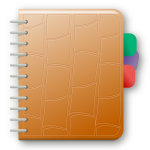 You may, by this point in time, have some inkling of my proclivity for all things organization and order.
You may, by this point in time, have some inkling of my proclivity for all things organization and order.
I’ve heard a saying that goes something like “Organization is for people too lazy to look for things”.
Yeah, I’m not buying that.
I like to know that everything has it’s own place to go, and exactly where that place is, so that I can find things in their proper places at any given time.
There may even be random spot checks, although I admit to nothing of the sort.
Even if you lack this mildly OCD behavior, don’t you like to stay organized from time-to-time?
I find organization to be even more important when it relates to the data on my computer.
So here are some tips on how I set up my own personal file structure, so that I can stay as organized as possible at all times.
Data Organization Recommendations
1. Start in a single location. If you have data scattered all over your file system/hard drive/devices/etc., it will quickly become difficult to find old (and sometimes new!) data. Choose a central location (your hard drive on Windows, your home directory on Linux, etc.) and create a folder called “My Data” (or something more informative/exciting). Use that folder as the foundation to store all of your data in one place. (Centralization also makes the backup process much easier!)
2. Use broad categories to begin with. Create broad sub-directories in your new central directory. You may already be familiar with directories such as Pictures, Music, Movies, Documents, etc. They are good examples of broad categories, and you can add others as needed, based on what jobs, interests and other data types that you will be storing.
3. Create relevant sub-directories. While some categories may work just find with a bunch of files dumped directly in them, others will require additional organization. You might find yourself creating directories within directories within directories for some subjects, with various files and directories in each of those levels. This is not uncommon. Usually what makes the most sense to you, personally, is what will enable you to find your files later on.
4. Use a brief but informative naming-system. This is important for directory and file names alike, and can make or break the entire directory structure. There will be instances, however, when renaming every file would be excessive. If a directory is well-labeled, for example, perhaps with a date and a location, and it contains a hundred photos from your day at the beach, I personally wouldn’t even consider trying to give individual informative names to each photo.
5. Display and order directories according to their content. There are various ways to display files in each file manager (icons, tiles, details, etc.) and some make more sense than others on a case-by-case basis for each directory. It usually makes more sense to view directories full of photos as icons with preview mode enabled, but to list music and documents. Similarly, you might like to order your documents alphabetically by name, but order your photos by date. Most file managers will allow you to change these settings as needed, and will remember your preferences for each directory.
6. Keep organizing. I’m a data pack-rat. Like most data pack-rats, I have a hard time deleting much of anything. But that ok, because it’s all neatly organized, out of my way until I (maybe) need it again. Maintaining large amounts of data does call for an occasional bout of re-organization, and even an occasional deletion, but I’ve always found it to be worth the time spent.
These steps will put you on the right track toward being able to find your data quickly and efficiently.
As always, add your own personal touches, and focus on the parts that are the most helpful to you while deciding how to organize your data.
Coming Soon
Stay tuned for some ideas on file-wrangling that include multiple ways to create, edit, rename, sort, order, associate, compress, and view.
